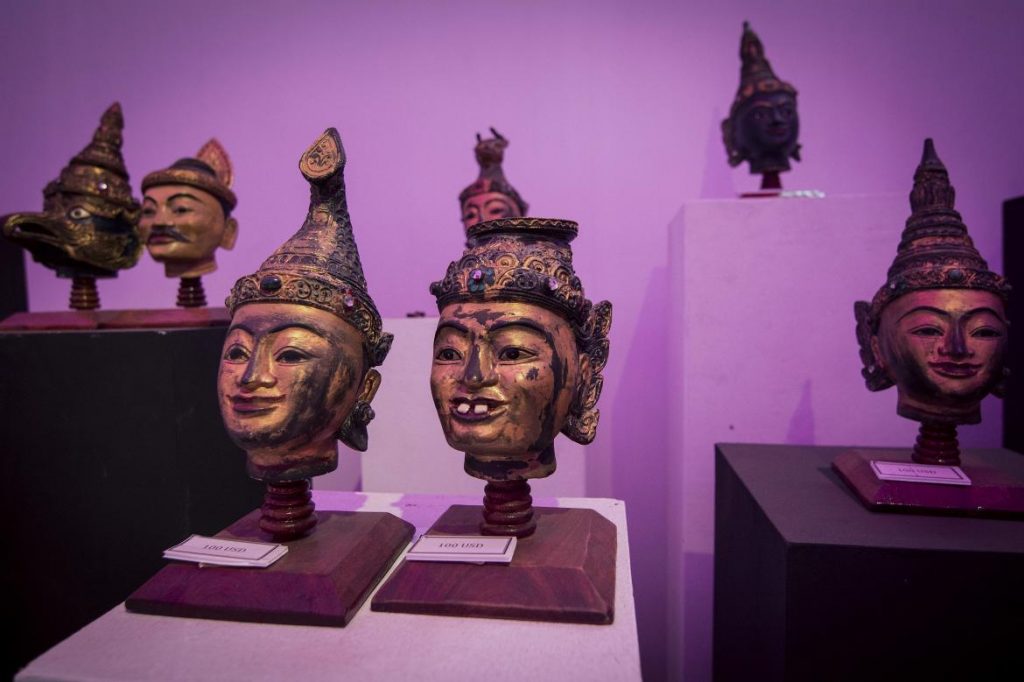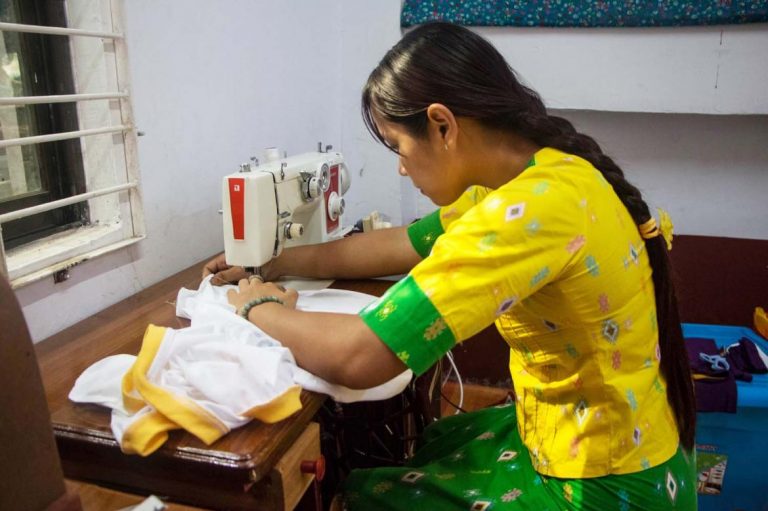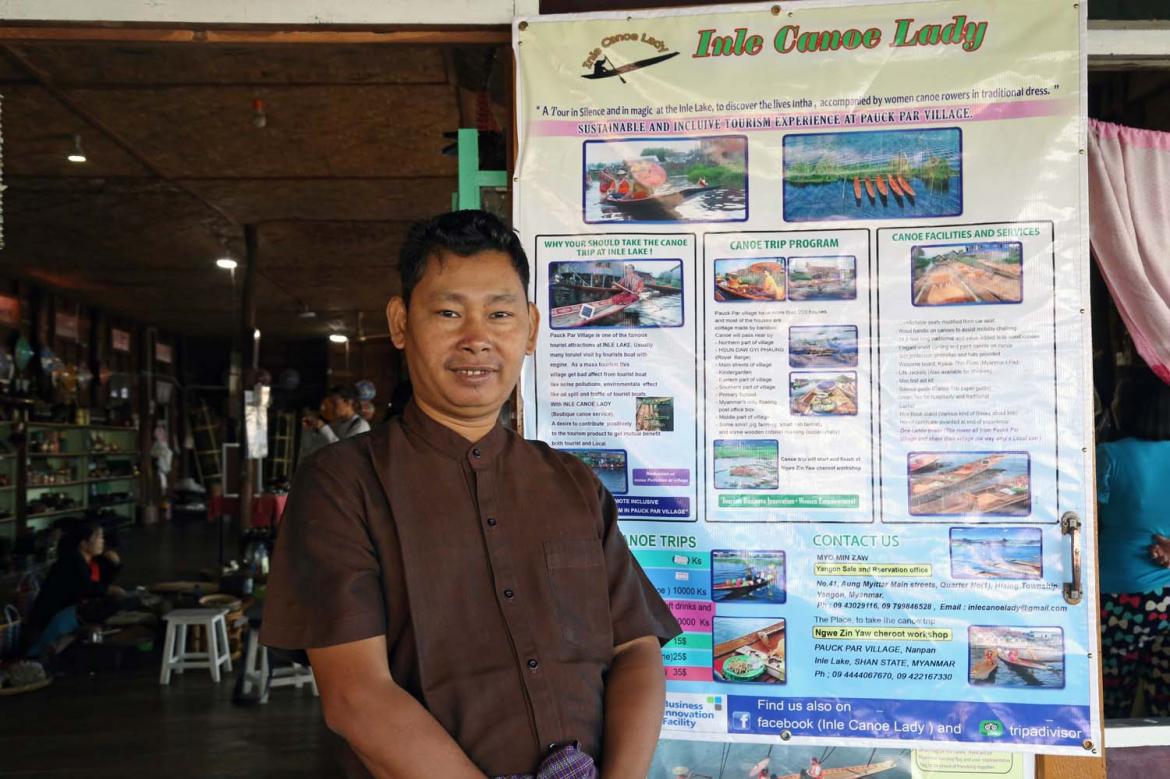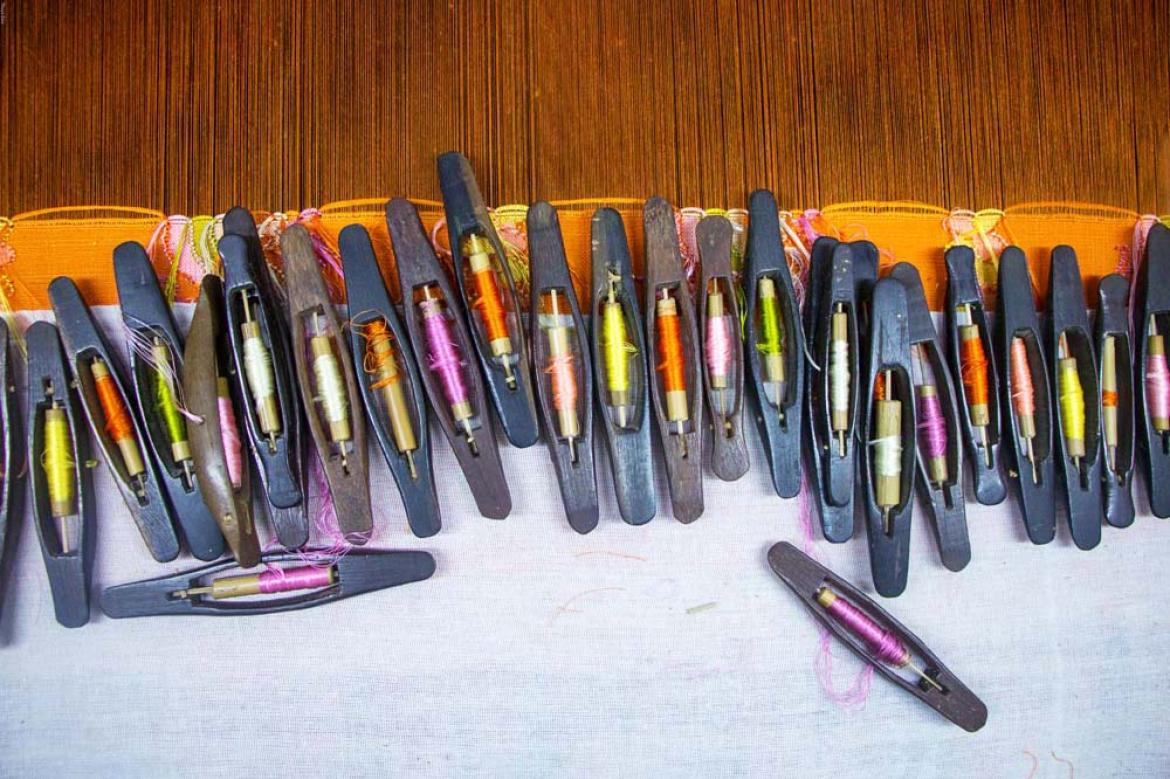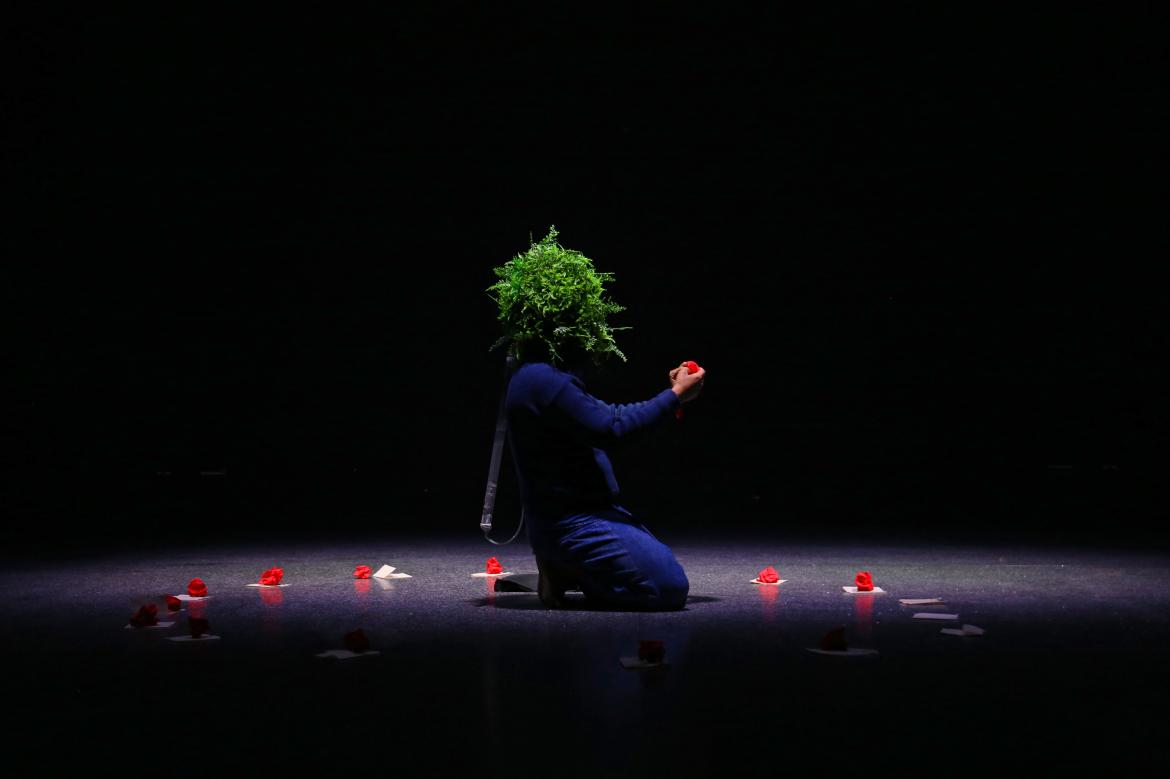Young Myanmar artists are helping to bring innovative design ideas to traditional crafts as part of an effort to ensure the survival of the industry.
By THI RI HAN | FRONTIER
U Aye Ko, artist and executive director of New Zero Art Space, is passionate about promoting traditional Myanmar crafts.
He was a driving force behind the “From Craft to Art: Myanmar Crafts Exhibition and Fair”, held at the Kandawgyi Karaweik Garden in Yangon from February 26 to March 1.
U Aye Ko said he wanted the event to “make the people of Myanmar aware of their own products, to know which products come from where, to allow people to cherish Myanmar traditional crafts and to develop the habit of collecting works of art”.
New Zero organised the event in conjunction with the British Council and the Swiss Agency for Development and Cooperation.
Support more independent journalism like this. Sign up to be a Frontier member.
The Craft to Art project was initiated in 2014, led by New Zero and supported by the other organisations, said Ma Nay Chi, coordinator of the British Council Myanmar Art Program. In previous years, organisers conducted surveys of significant traditional crafts and their marketing potential and sought artists willing to join the project.
tzh_handicraft10.jpg
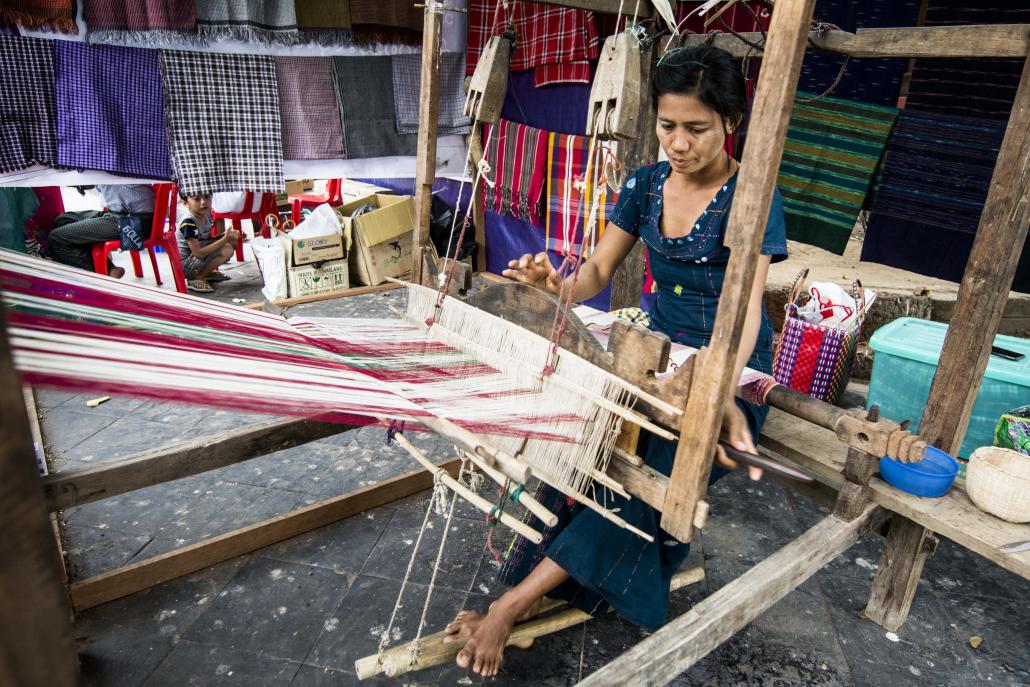
Teza Hlaing / Frontier
U Aye Ko said the surveys had initially focused on the areas around Inle Lake, Mandalay and Myitkyina.
“We did region-based workshops with local craftsmen and worked with them in their work places,” he said, adding that foreign artists and designers had conducted two-week training courses in each of the three regions.
The training had focused on encouraging craftspeople to be artistically innovative with their crafts and a subsequent exhibition of their creations at the Goethe Institute had been satisfactory, U Aye Ko said.
This year, training was provided to craftspeople from Bilu Island, off Mawlamyine in Mon State, and Matupi, in southern Chin State.
A two-day event in mid-January called “Craft Forward” was also held at the Strand Hotel in Yangon, bringing together craftspeople, designers, artisans, social entrepreneurs and policy makers.
“The meeting was the first of its kind in Myanmar and it gave opportunities for people with similar interests to exchange knowledge and discuss the problems facing them,” said Ma Nay Chi.
U Aye Ko said the Karaweik Garden exhibition had provided an opportunity for young Myanmar people to see and appreciate the diversity of traditional crafts in a single location.
“It is like a pot: You can easily put water in an empty pot but if the pot is already full of traditional culture and beliefs, it is difficult to accept more,” he said.
Some of the exhibits challenged tradition and one was a sculpture by Ko Aung Htike Soe of a Westerner, with a long, pointed nose, in the traditional costume of a nat, or spirit.
“I think it takes time to make people accept new ideas,” said Ko Aung Htike Soe, who makes Myanmar marionettes.
“My teachers have thought traditionally and worked traditionally and they are worried that cultural traditions handed down for generations will disappear,” he said.
“But young artists have different ideas; they want to break free from the old traditions.”
tzh_handicraft5.jpg
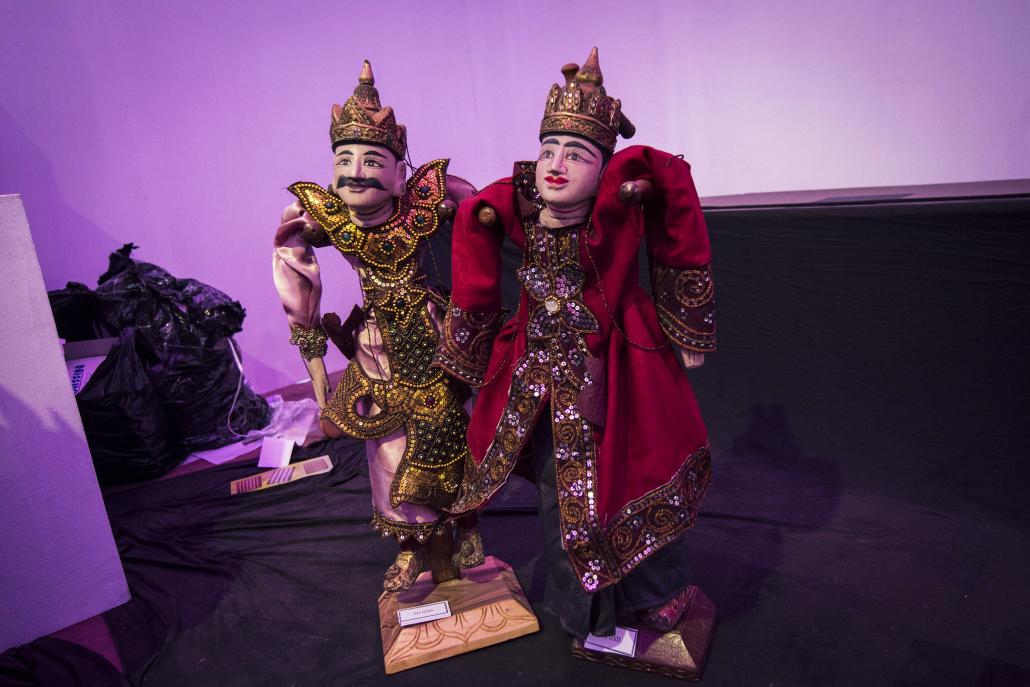
Teza Hlaing / Frontier
Ko Aung Htike Soe said sales of his marionettes had risen since he adopted designs that were more innovative.
U Aye Ko is confident the project to encourage craftspeople to adopt innovative designs will be successful and one reason is financial incentives.
He pointed to an earthenware pot in a non-traditional design.
“A traditional earthenware drinking water pot fetches between K1,000 and K1,500, but this pot could sell for between $60 and $70,” U Aye Ko said.
He cited lanterns made from bamboo as another example. “A traditional bamboo lantern sells for K6,000 to K7,000 but one made in a contemporary design can fetch its maker between K35,000 and K40,000,” he said.
“They are coming to realise that new designs can earn them more money.”
Ma Nay Chi expressed satisfaction with the progress being achieved by the project, the first of its kind in Myanmar.
New Zero’s promotion of innovation would support the development of the traditional handicrafts industry because it was hampered by weaknesses in quality and design.
As part of its support for the project, the British Council was planning to promote Myanmar handicrafts in promotion with other members of the Association of Southeast Asian Nations as a regional project, Ma Nay Chi said.
The effort to support traditional handicrafts comes at a time when many artisans are struggling to make a living.
U Aye Ko, among others, is hoping that innovation will revive the traditional handicrafts industry and ensure it has a brighter future.


